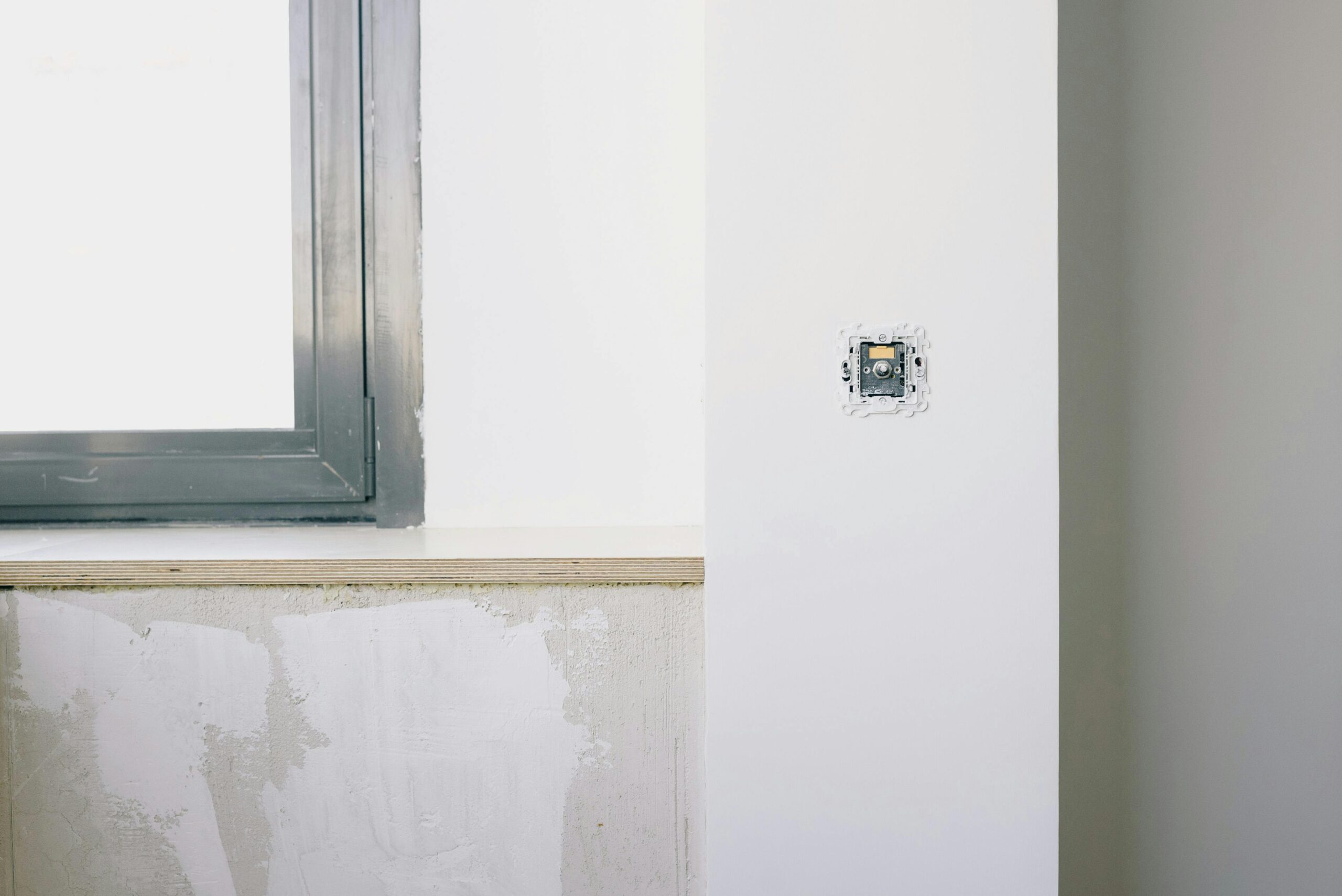Are you struggling to establish a reliable IPv6 connection on your Windows 11 device? You’re not alone! Many users encounter frustrating IPv6 connection issues that can disrupt their internet experience. In this article, we will uncover easy solutions to help you fix these pesky problems and get back to enjoying seamless online browsing, gaming, and streaming.
Understanding the root causes of Windows 11 IPv6 connection problems is crucial for effective troubleshooting. Whether it’s a misconfigured network setting, outdated drivers, or even compatibility issues with your ISP, we’ll explore the top causes and provide actionable steps to resolve them. Have you ever wondered why your connection speed drops or why certain websites won’t load? These issues may very well be linked to IPv6 settings!
By the end of this article, you’ll have a comprehensive grasp of how to fix Windows 11 IPv6 connection issues effectively. From simple adjustments to advanced configurations, we have got you covered with expert tips and tricks. So, if you’re ready to take control of your internet connection and eliminate those annoying IPv6 errors, keep reading! You’ll discover practical solutions that anyone can implement, regardless of their technical skills. Let’s dive into the world of Windows 11 networking and unlock the full potential of your internet connection today!
Proven Techniques to Troubleshoot IPv6 Connectivity Problems in Windows 11

IPv6 connectivity problems can be really frustrating for Windows 11 users. Many people rely on the internet for work, entertainment, and communication, so when something goes wrong with your connection, it can feel like a disaster. But don’t worry, there are proven techniques to troubleshoot IPv6 connectivity problems in Windows 11 that you can easily apply. Let’s explore some of the best ways to fix Windows 11 IPv6 connection issues.
Understanding IPv6
First, it’s important to know what IPv6 is. Internet Protocol version 6 (IPv6) is the most recent version of the Internet Protocol. It was designed to replace IPv4, which has a limited number of addresses. IPv6 offers a significantly larger address space, which is crucial as more devices connect to the internet. However, not all networks and devices fully support IPv6 yet, which can cause connectivity issues.
Common IPv6 Connectivity Issues
When you have problems connecting over IPv6, it often comes from a few common sources. Here are some of the issues you might encounter:
- Incorrect network settings
- Outdated network drivers
- Firewall configurations blocking IPv6
- Router issues
- Internet Service Provider (ISP) compatibility
Easy Solutions to Fix Windows 11 IPv6 Connection Issues
Here are some simple steps you can take to resolve your IPv6 connectivity problems.
-
Check Your Network Settings
- Go to the Start menu and open Settings.
- Select “Network & Internet.”
- Click on “Status” and then “Network troubleshooter.” This tool can automatically detect and fix issues.
-
Update Network Drivers
- Press Win + X, then select Device Manager.
- Expand the “Network adapters” section.
- Right-click your network adapter and choose “Update driver.” Follow the instructions to complete the update.
-
Disable Firewall Temporarily
- Sometimes, firewalls can block IPv6 traffic. To check this, open Control Panel and go to “System and Security.”
- Click on “Windows Defender Firewall” and select “Turn Windows Defender Firewall on or off.” Disable it temporarily to see if your connection improves. Remember to turn it back on after testing.
-
Reset TCP/IP Stack
- Open Command Prompt as an administrator. You can right-click the Start button and select “Windows Terminal (Admin).”
- Type the following command:
netsh int ipv6 resetand hit Enter. Restart your computer after this.
-
Check Router Settings
- Often, the router may need adjustment. Access your router’s settings page by typing its IP address into your browser.
- Look for settings related to IPv6 and make sure it is enabled. If you’re unsure, consult your router’s manual.
Additional Tips
- Try connecting to a different network to see if the issue persists. This can help you determine if the problem is with your device or your home network.
- You can also try disabling IPv6 if it’s not necessary for your usage. To do this, go back to your network settings, select your connection, and uncheck the IPv6 option.
- Keep your Windows 11 updated. Microsoft releases updates that can fix bugs and improve networking performance.
If you follow these steps, you should be able to fix Windows 11 IPv6 connection issues effectively. It’s important to remember that networking can sometimes be complex. However, with persistence and the right techniques, you can often resolve these problems without too much hassle. Don’t let IPv6 connectivity problems hold you back from your online activities!
Step-by-Step Guide: How to Fix Common IPv6 Issues on Windows 11

In the world of computer networking, IPv6 issues can be a real pain, especially for Windows 11 users. Many users face various connection problems, and most of the time, they have no idea how to fix it. So, if you’re dealing with these kinds of issues, you’re not alone. Thankfully, there are some simple steps you can take to resolve common IPv6 connection issues on Windows 11. This guide will help you navigate through these problems with ease.
Understanding IPv6 and Its Importance
IPv6, or Internet Protocol version 6, is the most recent version of the Internet Protocol. It was developed to replace IPv4, which is running out of available addresses due to the rapid increase of devices connecting to the internet. IPv6 provides a larger address space, which is essential as more and more devices come online. Despite its advantages, sometimes users have issues connecting to networks that use IPv6, especially on Windows 11.
Common IPv6 Issues on Windows 11
- Limited Connectivity: This can happen when your computer can connect to the network but not the internet.
- Slow Internet Speeds: Sometimes, you might notice that your internet is running slower than normal.
- Inability to Access Certain Websites: Some users find that they can’t reach certain websites that require IPv6.
These issues can be frustrating, but don’t worry! There are easy solutions.
Step-by-Step Solutions to Fix IPv6 Issues
Check Your Network Adapter Settings
- Open the Control Panel.
- Go to “Network and Internet” > “Network and Sharing Center.”
- Click on “Change adapter settings.”
- Right-click on your network connection and select “Properties.”
- Make sure that the Internet Protocol Version 6 (TCP/IPv6) is checked.
Reset TCP/IP Stack
Sometimes resetting the TCP/IP stack can fix connection issues. Here’s how to do it:
- Press the Windows key + X and select Windows Terminal (Admin).
- Type the following command:
netsh int ipv6 reset. - Hit Enter and restart your computer.
Disable and Re-enable IPv6
You can also try disabling and then re-enabling the IPv6 protocol:
- Go back to the network adapter settings as mentioned above.
- Uncheck the Internet Protocol Version 6 (TCP/IPv6) box to disable it.
- Click OK, and then restart your computer.
- Repeat the steps to enable it again.
Update Network Drivers
Outdated drivers can cause connection issues. To update your drivers:
- Press the Windows key + X and choose Device Manager.
- Expand the Network adapters section.
- Right-click on your network adapter and select Update driver.
- Follow the prompts to search automatically for updated driver software.
Check for Windows Updates
Keeping your Windows 11 up to date can resolve many network issues. Here’s how to check for updates:
- Go to Settings > Windows Update.
- Click on Check for updates and install any available updates.
Additional Tips
- Use Command Prompt: You can also use commands like
pingortracertto diagnose issues with IPv6 connectivity. - Firewall Settings: Sometimes, firewall settings can block IPv6 traffic. Check your firewall configurations if you still have issues.
By following these steps, you should be able to fix common IPv6 connection issues on Windows 11 effectively. It’s always a good idea to stay informed about your connection settings and keep your system updated. If you continue to experience problems, consider reaching out to your internet service provider for further assistance.
Unlock Faster Internet: Top 7 Solutions for Resolving IPv6 Connection Failures

In today’s rapidly evolving digital landscape, having a reliable internet connection is more important than ever. But what happens when you encounter issues with your IPv6 connection on Windows 11? Many users in New York and beyond have faced these problems, causing frustration and reduced productivity. Don’t worry, though! There are solutions to these pesky IPv6 connection failures that can help you unlock faster internet. Here’s a look at the top 7 ways to tackle these issues head-on.
1. Check Your Network Configuration
First things first, you need to check your network settings. Sometimes, the problem lies with the configuration itself. Go to your network settings and ensure that IPv6 is enabled. If you finds it disabled, enable it immediately. You can follow these steps:
- Right-click on the Start menu
- Select “Network Connections”
- Click on “Change adapter options”
- Right-click on your network connection and select “Properties”
- Make sure the checkbox for “Internet Protocol Version 6 (TCP/IPv6)” is checked.
If it wasn’t checked, you probably had issues.
2. Restart Your Router
Another simple solution is to restart your router. This often solves many connectivity problems. Unplug your router from the power source, wait for about 30 seconds, and plug it back in. This can refresh your connection and resolve any temporary glitches.
3. Update Network Drivers
Outdated network drivers can also lead to IPv6 connection issues. It’s crucial to keep your drivers updated. You can check for updates through the Device Manager:
- Right-click on the Start button
- Select “Device Manager”
- Expand the “Network adapters” section
- Right-click on your network adapter and choose “Update driver.”
Following this, you should see improvements, if there’s an update available.
4. Disable IPv6
If all else fails, you can try disabling IPv6 temporarily. While it’s not the long-term solution, it can help you regain connection. Just go through the same settings as above and uncheck the “Internet Protocol Version 6 (TCP/IPv6)” box. However, be aware that this is only a workaround, not a fix.
5. Run the Network Troubleshooter
Windows 11 comes with a built-in troubleshooter that can identify and resolve network issues automatically. To access this feature, go to:
- Settings > System > Troubleshoot > Other troubleshooters
- Find “Network Adapter” and hit “Run.”
This tool can find the problems and sometimes fix them without you lifting a finger.
6. Reset TCP/IP Stack
Resetting the TCP/IP stack might also help. You can do this by opening the Command Prompt as an administrator and typing the following commands one by one:
- netsh int ipv6 reset
- netsh int tcp reset
After executing these commands, restart your computer to apply the changes.
7. Contact Your ISP
If you’ve tried everything and still face issues, it might be time to contact your internet service provider (ISP). They can check if there’s an outage or issue on their end. Sometimes, your ISP can provide specific configurations that can resolve your IPv6 issues.
IPv6 connection failures can be a major hassle, especially on a modern operating system like Windows 11. The solutions provided above are not only practical but also easy to implement. By addressing these common issues, you can enjoy a seamless internet experience. Fast internet allows you to connect, stream, and work without interruptions, making these fixes very worthwhile.
Don’t let IPv6 problems hold you back—start troubleshooting today!
Are You Experiencing IPv6 Problems on Windows 11? Here’s What to Do!

Are you struggling with IPv6 problems on your Windows 11? You’re not alone! Many users face issues with IPv6 connectivity on this latest operating system. While IPv4 has been the standard for years, IPv6 is becoming increasingly important as the number of devices connected to the internet grows. If you’re facing difficulties, don’t worry! Here’s what you can do to fix Windows 11 IPv6 connection issues.
Understanding IPv6 and Its Importance
IPv6, or Internet Protocol version 6, was developed to replace IPv4, which was running out of address space. It provides a vastly larger address space and improved security features. Here are some key points:
- Larger Address Space: IPv6 offers 340 undecillion addresses compared to IPv4’s 4.3 billion.
- Improved Security: IPv6 includes IPsec, which offers secure communication.
- Better Network Efficiency: It simplifies routing and packet processing.
With more devices needing internet access, switching to IPv6 is essential. But sometimes, Windows 11 users encounter problems.
Common IPv6 Problems on Windows 11
Users may experience a variety of issues related to IPv6 including:
- Inability to connect to the internet
- Slow internet speeds
- Network errors or limited connectivity
- Difficulty in accessing certain websites
Steps to Fix Windows 11 IPv6 Connection Issues
If you’re having these problems, here are some simple solutions to try:
-
Check IPv6 Settings:
- Open Network & Internet settings.
- Go to “Status,” then click on “Change adapter options.”
- Right-click your network adapter, select “Properties,” and ensure that the “Internet Protocol Version 6 (TCP/IPv6)” box is checked.
-
Flush the DNS:
- Open Command Prompt as an administrator.
- Type
ipconfig /flushdnsand hit Enter. This clears the DNS cache.
-
Reset TCP/IP Stack:
- In Command Prompt, type
netsh int ipv6 resetand press Enter. - Restart your computer after this command.
- In Command Prompt, type
-
Update Network Drivers:
- Go to Device Manager and expand “Network adapters.”
- Right-click your network adapter and select “Update driver.”
- Follow the prompts to check for updates.
-
Disable IPv6 if Necessary:
- If issues persist, you can try disabling IPv6 temporarily to see if that fix the problem.
- Go back to the adapter settings, uncheck the IPv6 box, and restart your network connection.
When to Contact Your ISP
If you’ve tried these steps and still experience problems, it may be time to reach out to your Internet Service Provider (ISP). Sometimes, the issue might be upstream, and your ISP may have a solution or can fix the problem on their end.
Additional Resources
- Microsoft Support Articles: They often have updated information about troubleshooting Windows 11 issues.
- Online Forums: Websites like Reddit or Microsoft Community can provide insights from other users who faced similar issues.
IPv6 problems on Windows 11 can be frustrating, but they are often fixable with a few simple steps. The transition to IPv6 is crucial for the digital landscape, and ensuring your connection works smoothly is important. By following these guidelines, you can hopefully resolve any connectivity issues and get back to enjoying the internet without interruptions. Remember to keep your system updated and regularly check network settings to avoid future problems. If all else fails, don’t hesitate to seek professional help or check with your ISP for support.
Expert Tips: Enhance Your Windows 11 IPv6 Connection with These Easy Fixes

In the world of digital connectivity, IPv6 is becoming more and more crucial. Windows 11 users in New York often face issues with their IPv6 connections. If you find yourself stuck with slow internet or dropped connections, you’re not alone! Here, we share expert tips that can help fix Windows 11 IPv6 connection issues, leading to a smoother online experience.
Understanding IPv6
IPv6, or Internet Protocol version 6, is the latest version of the Internet Protocol. It was developed to replace IPv4, which is running out of addresses due to the massive growth of devices connected to the internet. IPv6 provides a virtually unlimited number of IP addresses. Yet, it still not widely adopted, and many users experience issues with their connections, especially on Windows 11.
Common Issues with Windows 11 IPv6 Connections
Many users have reported issues regarding their IPv6 connectivity. These range from “No Internet Access” messages to complete failure to connect to the network. Some common issues include:
- Misconfigured network settings
- Driver issues with network adapters
- Firewall or antivirus blocking IPv6 traffic
- Service provider not supporting IPv6
Easy Fixes to Enhance Your IPv6 Connection
If you’re struggling with IPv6 on Windows 11, don’t worry! Here are some easy solutions that can help you get back online.
-
Check Network Adapter Settings
- Right-click on the Start menu and select “Network Connections.”
- Click on “Change adapter options.”
- Right-click on your active network adapter and choose “Properties.”
- Make sure the box next to “Internet Protocol Version 6 (TCP/IPv6)” is checked.
-
Renew IP Address
- Open Command Prompt as an administrator.
- Type
ipconfig /releaseand press Enter. - Then type
ipconfig /renewand press Enter again. - This can refresh your IP settings and often resolves connectivity issues.
-
Update Network Drivers
- Go to Device Manager by right-clicking the Start menu.
- Expand the “Network adapters” section.
- Right-click on your network device and select “Update driver.”
- Follow the prompts to search automatically for updated driver software.
-
Disable Firewall Temporarily
- Go to Control Panel > System and Security > Windows Defender Firewall.
- Click on “Turn Windows Defender Firewall on or off.”
- Select “Turn off Windows Defender Firewall” for both private and public networks.
- Remember to turn it back on after testing your connection!
-
Reset TCP/IP Stack
- Open Command Prompt as administrator.
- Type
netsh int ipv6 resetand press Enter. - Restart your computer.
Additional Tips
- Ensure your router’s firmware is up-to-date. Sometimes, outdated firmware can cause connectivity issues.
- Check with your internet service provider to confirm that they support IPv6.
- Consider using a different DNS provider that fully supports IPv6.
Conclusion
Fixing Windows 11 IPv6 connection issues can seem daunting, but with these straightforward steps, you can easily enhance your connectivity. Even if your IPv6 issues persist, trying various combinations of the tips provided can lead to a solution. Remember, maintaining a stable connection is essential in today’s digital world, especially for those in bustling cities like New York. Don’t let connectivity problems hold you back from enjoying your online endeavors!
Conclusion
In conclusion, resolving IPv6 connection issues in Windows 11 requires a systematic approach that addresses both software and hardware aspects of your network. We’ve explored several key solutions, including updating your network adapter drivers, adjusting your network settings, and ensuring your router’s firmware is up to date. Additionally, disabling and re-enabling IPv6 can often reset configurations that may be causing connectivity problems. It’s also essential to verify that your Internet Service Provider supports IPv6, as this can significantly impact your connection. By following these troubleshooting steps, you can significantly enhance your network performance and ensure a seamless online experience. If you continue to experience issues, consider reaching out to technical support for further assistance. Take action today to optimize your Windows 11 system and enjoy the benefits of a stable and fast internet connection.

